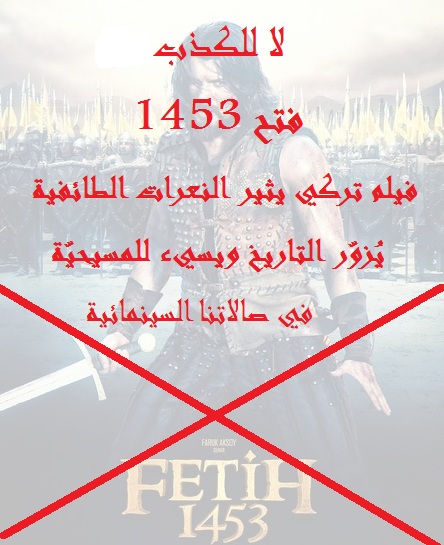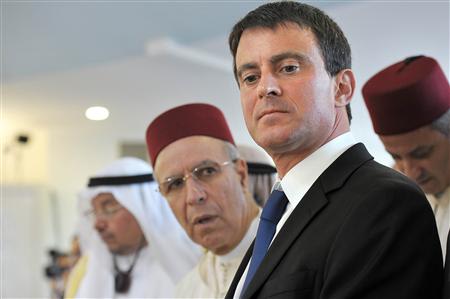Philosophy and Religion - Religions in Germany - Goethe-Institut
 A forthcoming award for cultural dialogue has been withdrawn from Navid Kermani because he wrote an essay in which he dealt critically with the Christian theology of the cross. In his commentary, Stefan Weidner says it's Kermani's critics who have shown themselves to be incapable of dialogue.
A forthcoming award for cultural dialogue has been withdrawn from Navid Kermani because he wrote an essay in which he dealt critically with the Christian theology of the cross. In his commentary, Stefan Weidner says it's Kermani's critics who have shown themselves to be incapable of dialogue. Much has been achieved in Germany over the last few years with regard to dialogue with Muslims and the involvement of Islam in Germany's political, social and cultural life. The institutional churches, both catholic and protestant, have played a positive – indeed often a pioneering – role in this rapprochement.
They regularly showed more understanding of the religious feelings of Muslims than did secular elements in our society, which often take pleasure in openly provoking the organised religions; at times it appeared that a committed German Christian had more in common with a committed Muslim (wherever he or she may have come from) than with their unbelieving fellow-Germans who had distanced themselves from religion.
EA prize scandal

All of a sudden, on May 13, 2009, such assumptions about the relationship between the religions were shown to be premature. There seems to have been a change of perspective with regard to dialogue with Islam, and it almost looks as if the most influential representatives of the churches are taking off the masks of friendship they've been showing to the Muslims.
What exactly has happened? The German state of Hesse, which includes the major city of Frankfurt, decided to use its 45,000 euro culture prize this year to honour those involved in inter-religious dialogue.
With a distinct lack of imagination, it chose official representatives of institutional religion: Cardinal Karl Lehmann, Bishop of Mainz, Peter Steinacker, former president of the protestant churches in Hesse, Salomon Korn, chairman of the Frankfurt Jewish community, and – because there isn't an official representative of Islam – Fuat Sezgin, a prominent scholar and founder of the Institute for Arab-Islamic Studies at the University of Frankfurt.
Speaking about disagreements
Sezgin, who is now 85 years old, didn't want to accept a prize together with Salomon Korn, whose pro-Israeli views during the Gaza war he found unacceptable. To replace him, the prize-givers chose Navid Kermani, a 41-year-old German writer and Islam specialist from an Iranian family, a thoroughly liberal but still committed Muslim. Kermani also had his doubts, not just about Korn, but also about the premier of Hesse, Roland Koch, who is responsible for awarding the prize. In the end, Kermani decided to accept the prize, and to discuss the disagreements at the award ceremony. But that was not to be.
Now it was the representatives of the two Christian churches who weren't happy. They said they weren't prepared to accept the prize together with Kermani. Lehmann and Steinacker had a problem with an essay by Kermani in which he wrote about his feelings on seeing a painting of the crucifixion by the Italian seventeenth-century painter Guido Reni.
The cross as blasphemous?
In his article, Kermani describes how he is repelled by the cross, how he even experiences it as blasphemous, but how in the presence of this moving picture by Reni, he begins to imagine that he could even come to believe in the cross. He wrote, “For me, the cross is a symbol which I cannot accept on a theological level, (...) Others may believe whatever they want, and I don't know better than they do. But when I pray in a church, which I sometimes do, I always make a point of not praying towards the cross. And there I was, sitting in front of the altarpiece by Guido Reni in the St. Laurence church in Lucina, and I found the image so fascinating, so full of blessing, that I could have remained seated there for ever. For the first time, I thought: I – I, and not just: one – I could believe in the cross.”
“The barbarity of hypostasising pain”
If one reads this text of Kermani's without preconceptions, one may – at least if one is Christian – initially be put off by the drastic formulation of his rejection of the cross, only to be more pleasantly surprised by the writer's admission that he “could believe in the cross.”
Kermani continues: “At the same time, I find the hypostasis of pain to be something barbaric: it's a rejection of the body, a kind of ungratefulness towards creation, over which we should rejoice and which we should enjoy, in that we recognise the creator in his works. In my heart, I can understand why Judaism and Islam reject the crucifixion.” p>The text lives from these dramatically opposed feelings; it's a miniature dramatisation of the dialogue between Islam and Christianity; and it's by no means disrespectful. It's rather a philosophical and theological meditation.
But the representatives of the Christian churches had no understanding for this literary dramatisation of dialogue and its difficulties. For them, the Muslim rejection of the cross – which ought to be easy to understand – is evidently unacceptable. At this point we could say: OK, if that's your view, we ought to respect it. But then you should do the same as Fuat Sezgin, and refuse the prize; someone will certainly be found to take your place.
The path of least resistance

But that's not what happened: Cardinal Lehmann wrote an angry letter to Premier Koch in which he demanded that the offer of the prize should be withdrawn from Kermani. Faced with the alternative of annoying Lehmann and Steinacker or sacrificing Kermani, Koch chose to sacrifice Kermani – a freelance writer without any official position, and without an institution behind him. Koch's staff will probably have thought that it would be the path of least resistance to let Kermani go. But they were wrong.
Navid Kermani is one of the most well-known Muslim writers in Germany. There is scarcely a serious newspaper or a radio or television station in the country which has not published something by him. He's won prizes, he's a member of the German Academy for Language and Poetry, one of the people chosen by the government to be a member of the German Muslim Conference, and has written many books which have made an unquestioned contribution to Christian-Muslim dialogue.
There's a rare unanimity in the reaction of the German cultural world to Lehmann's letter and Koch's response: Kermani has deserved the prize; Lehmann, Steinacker, the state of Hesse and its premier Koch have made fools of themselves. Calls are being heard to cancel the whole embarrassing award.
Controversial discussion about the cross
Lehmann and Steinacker have publicly disqualified themselves for dialogue. The big question remains: is their view representative of that of the catholic and protestant churches in Germany? Have official representatives of the churches said goodbye to what seemed for years to be a serious attempt at dialogue, merely because Muslims insist that they're Muslims and, as Muslims, reject the cross, and are perhaps even repelled by it? That would be a dramatic u-turn in current policy, and it would be all the greater as the meaning of the cross is under discussion in the churches themselves.
And one must see such a development as grotesque if one bears in mind that the West has not been hesitant to reject central elements of Muslim belief: for example, by mocking Mohammed in the Danish cartoons, in desecrating the Koran in Guantanamo and Iraq, in the regular debates over Sharia law. If the church doesn't intend to put a stop to dialogue, Lehmann and Steinacker need to get down on their bended knees and ask forgiveness, admit their failure in dialogue, and refuse the prize.
Resurrection of dialogue

There remains the question: how can it be that a German state and its premier can allow themselves to be given orders by a disgruntled bishop who's obviously incapable of a balanced judgement? The appropriate reaction to Lehmann's letter would have been to call on the representatives of the church to refuse the prize, just as Fuat Sezgin did.
We can learn something from all this: we're not doing as well as we thought in separating state and religion, even though we are always telling the Muslim world that that's what they ought to learn from us. As far as dialogue is concerned, we can only hope that it follows the example of Jesus Christ and rises again as soon as possible!





 A forthcoming award for cultural dialogue has been withdrawn from Navid Kermani because he wrote an essay in which he dealt critically with the Christian theology of the cross. In his commentary, Stefan Weidner says it's Kermani's critics who have shown themselves to be incapable of dialogue.
A forthcoming award for cultural dialogue has been withdrawn from Navid Kermani because he wrote an essay in which he dealt critically with the Christian theology of the cross. In his commentary, Stefan Weidner says it's Kermani's critics who have shown themselves to be incapable of dialogue. All of a sudden, on May 13, 2009, such assumptions about the relationship between the religions were shown to be premature. There seems to have been a change of perspective with regard to dialogue with Islam, and it almost looks as if the most influential representatives of the churches are taking off the masks of friendship they've been showing to the Muslims.
All of a sudden, on May 13, 2009, such assumptions about the relationship between the religions were shown to be premature. There seems to have been a change of perspective with regard to dialogue with Islam, and it almost looks as if the most influential representatives of the churches are taking off the masks of friendship they've been showing to the Muslims.  But that's not what happened: Cardinal Lehmann wrote an angry letter to Premier Koch in which he demanded that the offer of the prize should be withdrawn from Kermani. Faced with the alternative of annoying Lehmann and Steinacker or sacrificing Kermani, Koch chose to sacrifice Kermani – a freelance writer without any official position, and without an institution behind him. Koch's staff will probably have thought that it would be the path of least resistance to let Kermani go. But they were wrong.
But that's not what happened: Cardinal Lehmann wrote an angry letter to Premier Koch in which he demanded that the offer of the prize should be withdrawn from Kermani. Faced with the alternative of annoying Lehmann and Steinacker or sacrificing Kermani, Koch chose to sacrifice Kermani – a freelance writer without any official position, and without an institution behind him. Koch's staff will probably have thought that it would be the path of least resistance to let Kermani go. But they were wrong.  There remains the question: how can it be that a German state and its premier can allow themselves to be given orders by a disgruntled bishop who's obviously incapable of a balanced judgement? The appropriate reaction to Lehmann's letter would have been to call on the representatives of the church to refuse the prize, just as Fuat Sezgin did.
There remains the question: how can it be that a German state and its premier can allow themselves to be given orders by a disgruntled bishop who's obviously incapable of a balanced judgement? The appropriate reaction to Lehmann's letter would have been to call on the representatives of the church to refuse the prize, just as Fuat Sezgin did. 